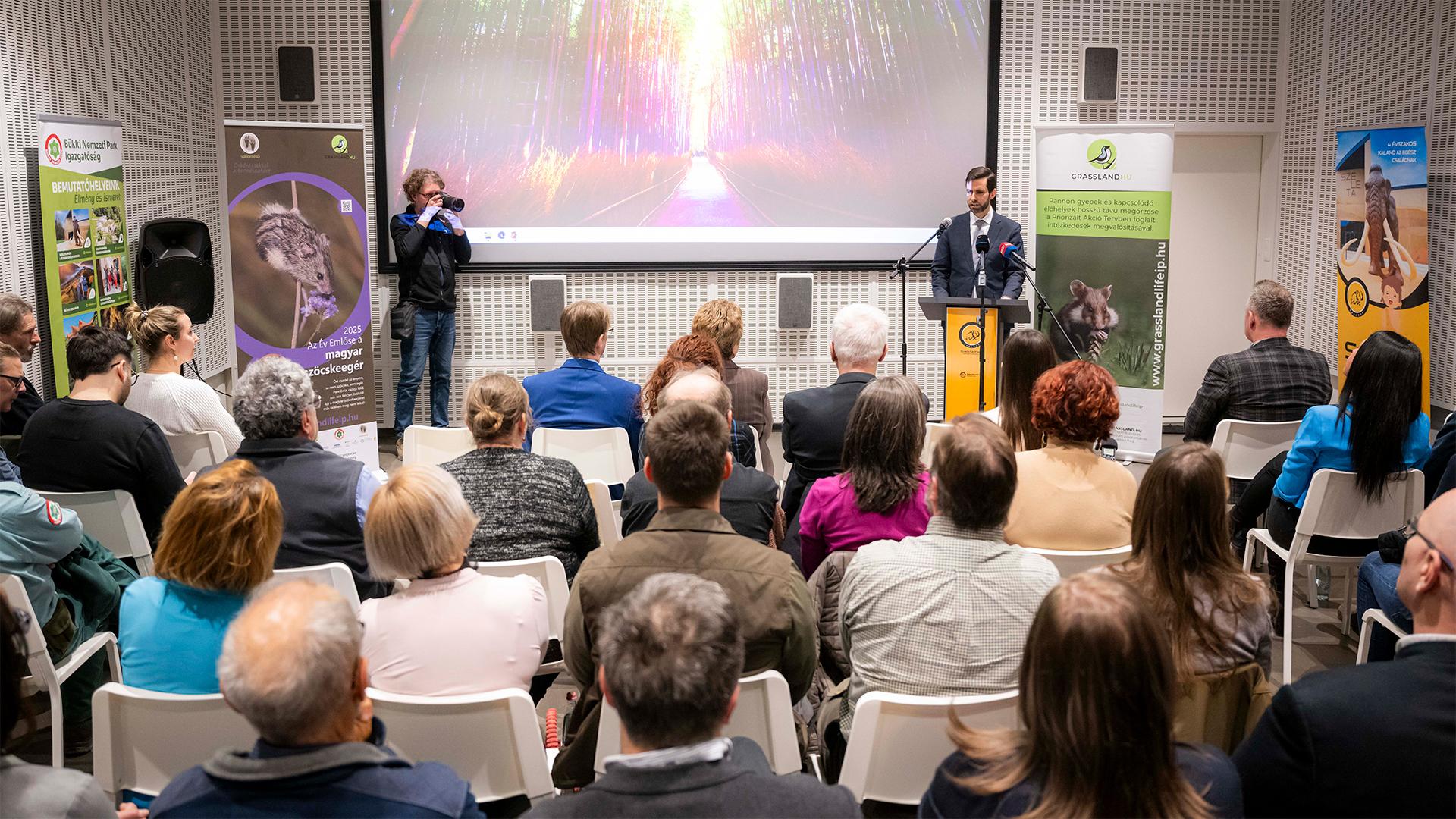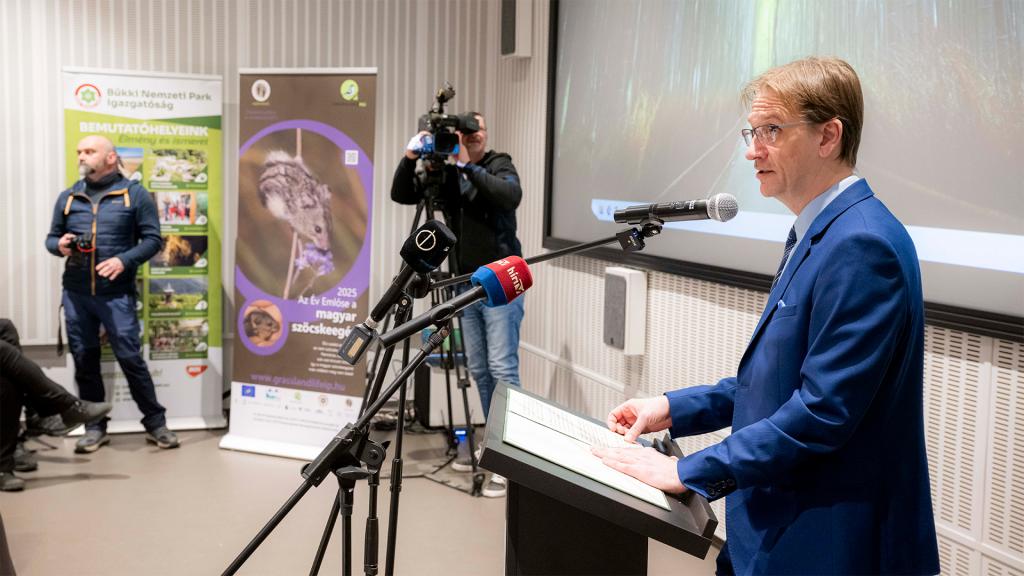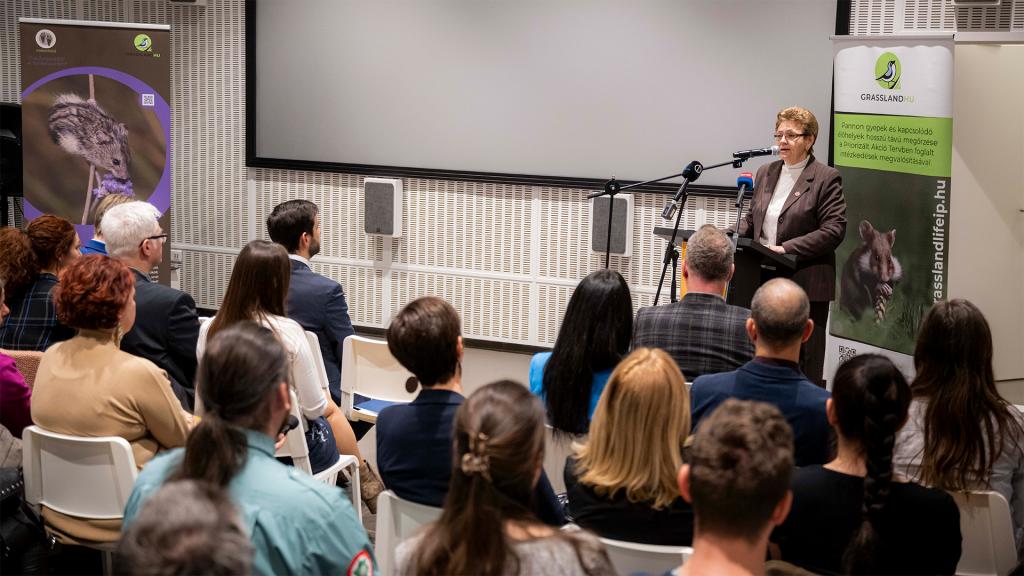Our natural heritage comes with responsibility

Hungary possesses a unique natural heritage that stands out even on a global scale, emphasized the Deputy State Secretary responsible for nature conservation at the event “Mammal of the Year: the Hungarian birch mouse” held in Miskolc.
According to Bertalan Balczó (Deputy State Secretary of the Ministry of Agriculture), the Hungarian birch mouse, selected as the Mammal of the Year, is an “excellent representative” of numerous natural treasures, for which Hungary bears decisive, or even in some cases exclusive, responsibility for preserving their global populations.
The Deputy State Secretary added that these are animal and plant species whose distribution entirely confined within Hungary’s borders. In many cases, their population sizes are so small that they are even more diminutive than the iconic giant panda, the symbol of global nature conservation. These are endemic species that have evolved over thousands or even millions of years in the Carpathian Basin and exist exclusively there. Examples include the Banat peony (Paeonia officinalis ssp. banatica), the Pilis flax (Linum dolomiticum), and this year’s Mammal of the Year, the Hungarian birch mouse (Sicista trizona).
Bertalan Balczó underlined that the value of this heritage must be recognized and preserved, especially in the context of dramatic biodiversity decline both on European and global scale..
In addition to familiarizing the public with the reigning Mammal of the Year, by the initiative the experts also wish to raise awareness both on the species itself and to highlight the threats to its populations, the conservation challenges professionals are tackling, and the key actions that need immediate attention.
In his opening remarks, Mr. Balczó also emphasized that natural and semi-natural ecosystems provide essential services to humanity, including clean water, clean air, pollination, and climate regulation. He stated that an ecosystem can only remain stable and resilient to face accelerating environmental changes only if it maintains adequate species diversity. The protection of nature and the preservation of its values is therefore also a strategic, economic, and competitiveness issue – he added.
Deputy State Secretary acknowledged that conserving species like the Hungarian birch mouse requires thorough scientific understanding. As long as the species’ essential needs and threats are unknown, all protective measures taken can only be regarded as cautious attempts.
Balczó also spoke about the National Biodiversity Monitoring System, noting that through the involvement of experts of the ten national park directorates, along with numerous research institutes, independent researchers, and data collectors, the regular monitoring of hundreds of plant and animal species and their habitats is ongoing.
The creation of a comprehensive national nature conservation database is an important future goal – he admitted. This will enable moderated, yet user-friendly access to biodiversity data collected by conservation professionals.
Mr Balczó further underlined that beyond professional expertise, broad public support is also crucial for effective nature conservation efforts. In this regard, both the Mammal of the Year initiative and the Vadonleső Program have consistently played a significant role.

In his welcome address, Kornél Füredi, Managing Director of the Herman Ottó Institute Nonprofit Ltd., highlighted that since 2019, the institute has been jointly operating the Vadonleső Program in partnership with the Ministry of Agriculture. Launched in 2009, the initiative was one of the first citizen science projects in Hungary. Today, with the help of volunteers it gathers distribution and potential threat data on eighteen protected plant and animal species across the country.
He added that the program currently stores around 18,000 submitted records, with an annual average of about 1,000 new submissions. Launched in 2014, the Mammal of the Year campaign supports this work with a year-long series of events, drawing attention to the chosen species and its habitat.
Füredi also highlighted that the Grassland-HU LIFE integrated project, implemented under the institute’s management, identified the Hungarian birch mouse—this year’s Mammal of the Year—as one of its flagship species. This, he said, creates a valuable synergy, allowing the Mammal of the Year program to be reinforced by the project, and vice versa.

Kálmánné Rónai, Director of the Bükk National Park Directorate, explained that according to current knowledge, the Hungarian birch mouse can only be found in the Borsodi Mezőség region within Hungary. She added that the species is classified as globally endangered.
Source: MTI, Herman Ottó Institute Nonprofit Ltd.
Photo: Csaba Pelsőczy